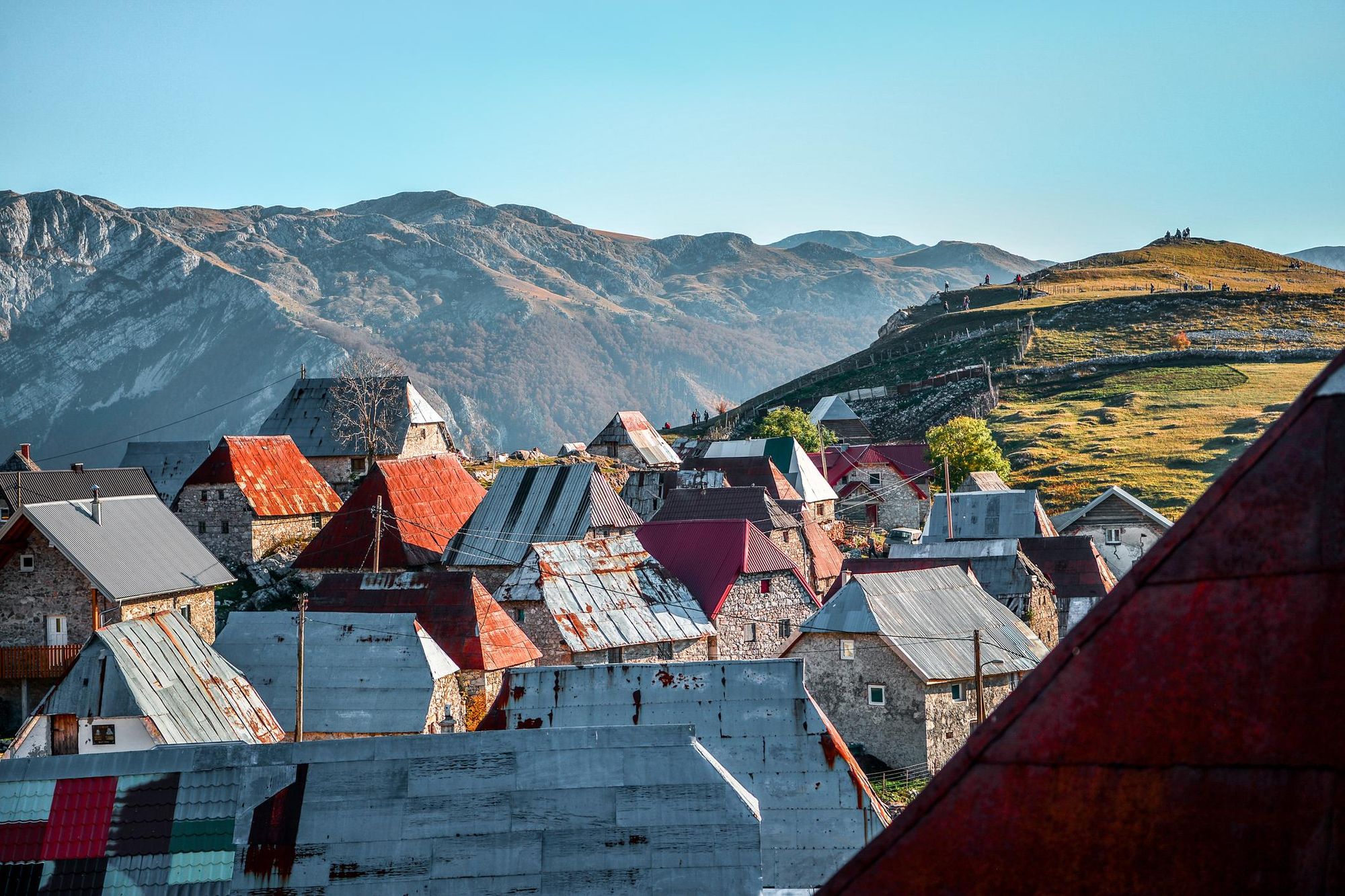The dry, dusty road to Lukomir is not for the faint of heart (or stomach). By late autumn, the road becomes but a memory, when it disappears altogether under several metres of snow, cutting off access for the handful of homes in Bosnia and Herzegovina’s highest and most isolated village until May when the icy mountain thaws.
This mysterious village, with its tiny population, springs back into life as the warmer months arrive – sheep jangle bells on the ridgelines, smoke curls from stone chimneys, and you get the sense that you’ve stumbled into a chapter of history that time almost forgot.
The most isolated village in Bosnia and Herzegovina was nearly a story for the history books, but today, it has become a fascinating tale of resilience.
As I wandered along the rocky path into the village and the familiar scent of burek wafted on the breeze, I watched as the curious women of the village lined the walls in front of their homes. Warm smiles and encouraging waves beckoned me over to peruse their knitted wares as they felt the light layers that covered my skin on the sunny day. It was clear that the harsh winters were never far from their minds.

Wrapped in her headscarf and many layers – the uniform of the village’s female population – one woman stopped to chat with my guide. She held court at the doorway to her home as we gathered round to hear stories of the village’s enduring survival. The most isolated village in Bosnia and Herzegovina was nearly a story for the history books, but today, it has become a fascinating tale of resilience and the power of responsible tourism.
A Time Capsule with Wool Socks
From afar, the village of Lukomir looks like it has been abandoned on Bjelašnica’s shoulder, high in the Dinaric Alps at 1,495m (4,904ft).
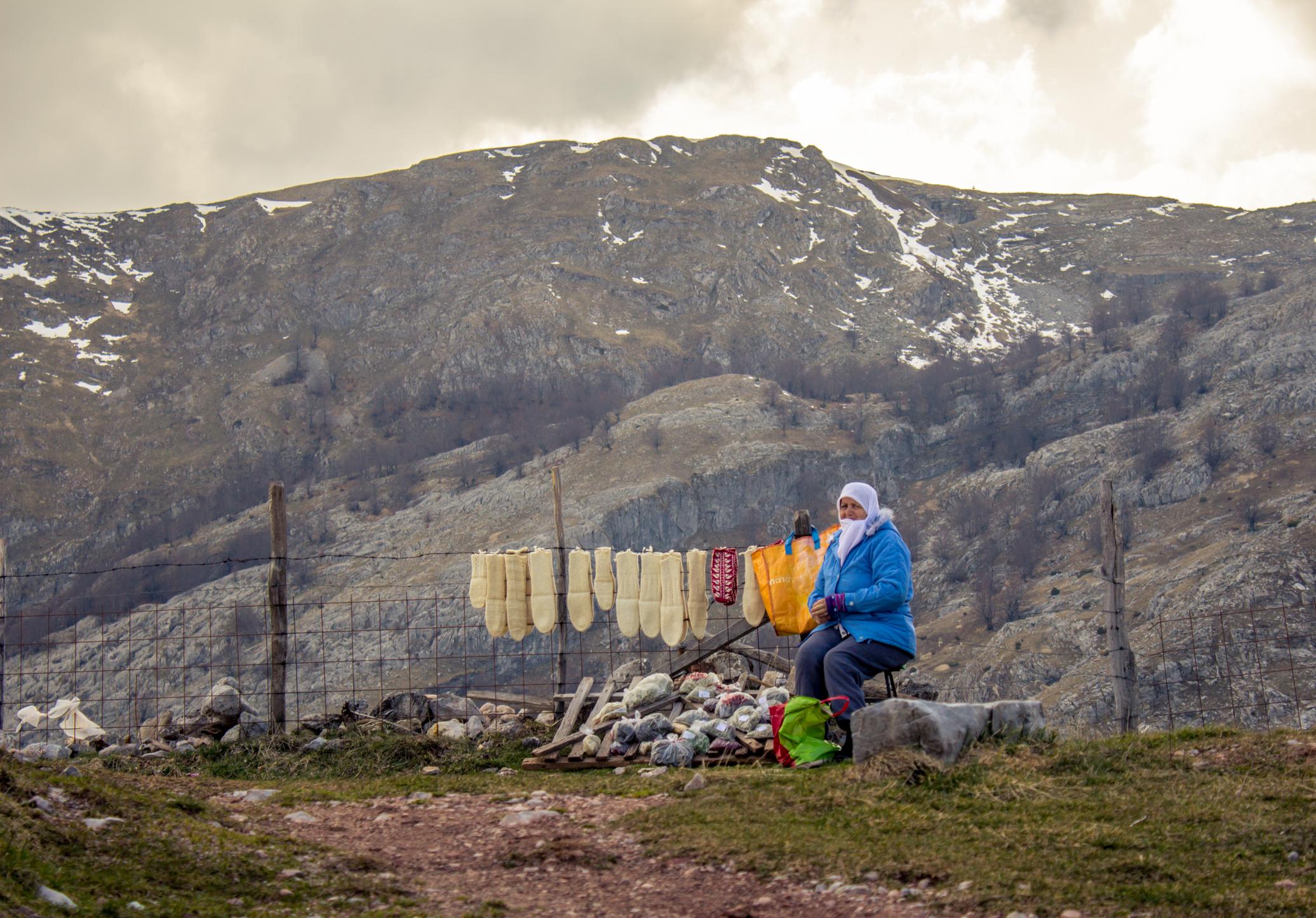
Around 56 miles (90km) from the bustling capital of Sarajevo, the village is left exposed to the elements, high in the hills. A walk through the uneven streets reveals crooked stone cottages squat against the wind, roofs stitched together with wooden tiles and braced against the winds.
Wander closer and you’ll spot the stećci – medieval tombstones scattered across the hillsides, some etched with carvings of hunters and crosses. They’ve been here since the 14th century, quietly reminding anyone passing through that Lukomir has always been a frontier.
The mountains acted as both shield and sentence – protecting the culture, but making life harsh...
The people here are highlanders, mountain folk who still live by the rhythm of the flock. Life in Lukomir is stripped back to the basics. You can still find women knitting thick socks and gloves outside their homes – the kind of gear that doesn’t just keep you warm, it keeps you alive. Lukomir gives a glimpse into a way of life that has remained for centuries, and a close-knit community that has preserved their traditions and customs with pride.
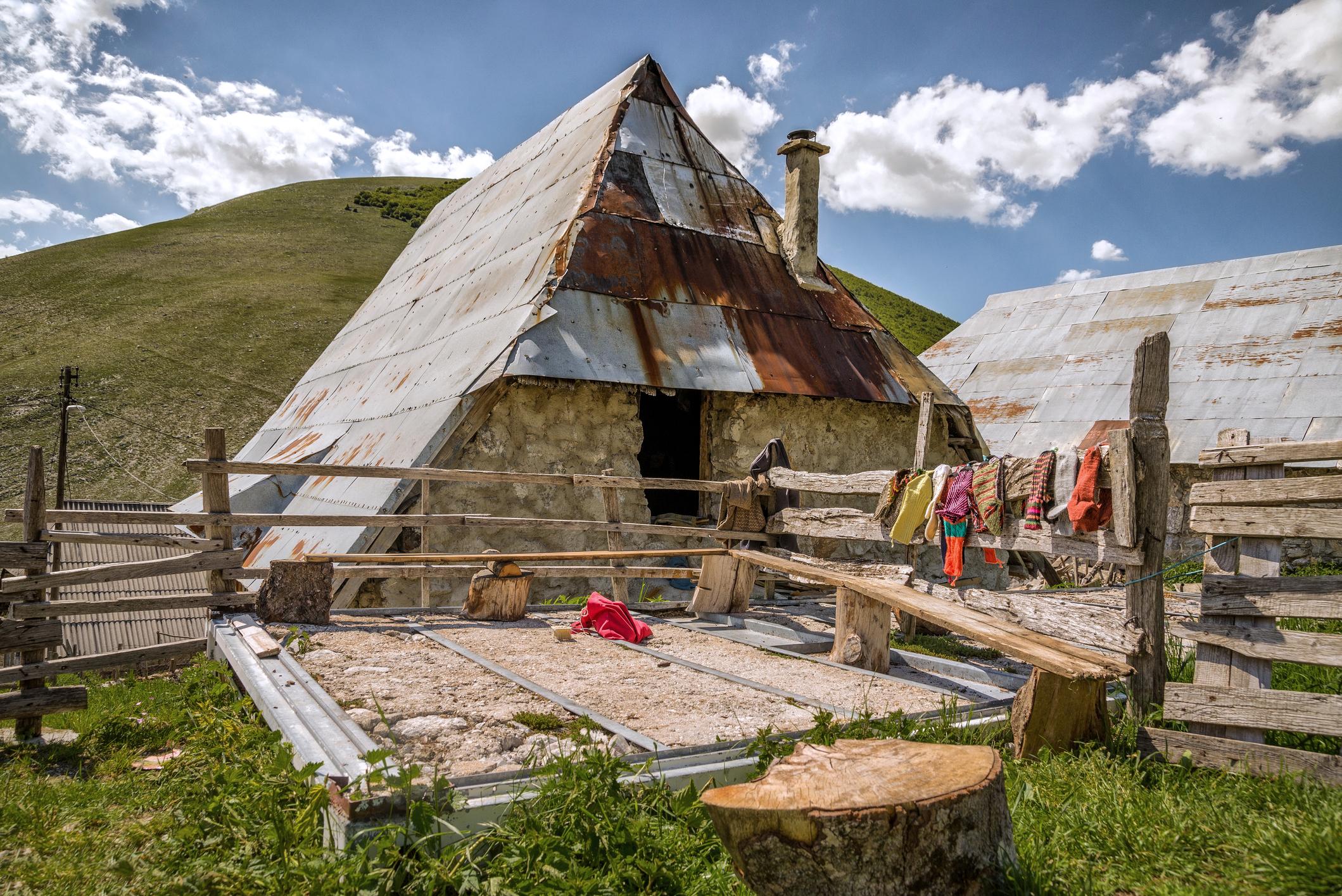
Step beyond the last cottage and the ground drops away into the Rakitnica Canyon – a raw scar of limestone plunging nearly 800 metres (2,624ft) deep. Tearing through the gentle, green meadows, the contrast is abrupt and leaves you speechless. It’s clear why the trek – one which is often made today – was enough to keep the village isolated from outsiders for so many years.
This is probably why Lukomir feels so untarnished. The mountains acted as both shield and sentence – protecting the culture, but making life harsh and a matter of survival.
Then, hikers started showing up. At first, just a trickle: curious travellers on the Via Dinarica, a mega-trail threading through the Balkans.
Not long ago, Lukomir was slipping quietly off the map. Younger generations moved to Sarajevo or Mostar for work, leaving their grandparents to fight on, relying on traditional farming and shepherding to survive.
By the 1990s, the average age in the village was climbing fast, winters were harsher than ever, and there were fears that Lukomir would soon be nothing more than a cluster of empty houses.

Then, hikers started showing up. At first, just a trickle: curious travellers on the Via Dinarica, a mega-trail threading through the Balkans. It was enough to put Lukomir on the map and adventure operators began guiding groups to the area.
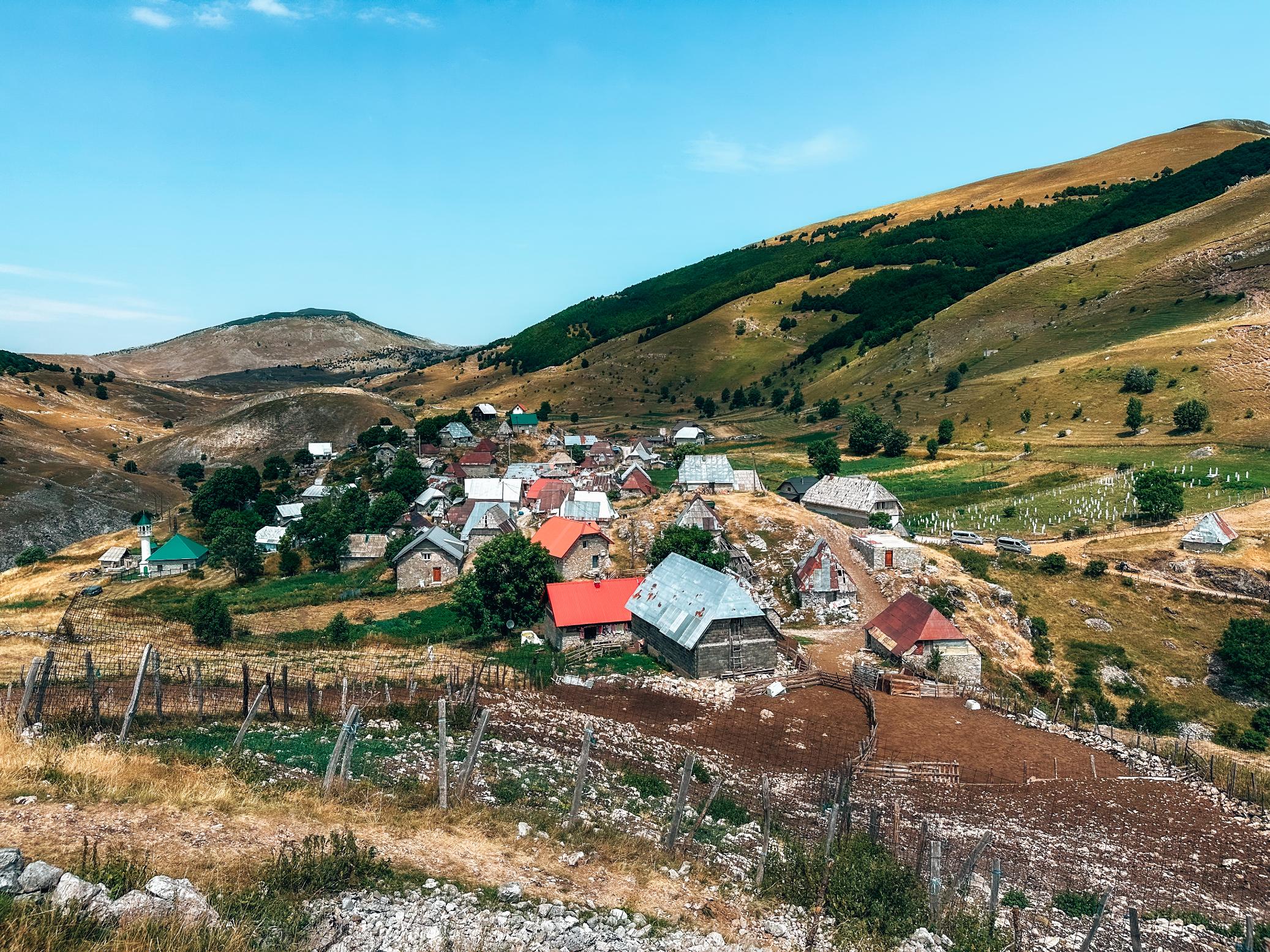
Money started flowing in – not a flood, but enough for locals to dust off the old traditions and put them to work. Grandma’s knitted socks became a business. Delicious homemade burek turned into a lunch stop for tired trekkers and a chance to connect with the locals. Guesthouse beds were offered to anyone hardy enough to spend the night.
Tourism didn’t bulldoze its way in. It tiptoed. And in doing so, it gave Lukomir what it needed most: a reason for young people to come back each summer to work, and preservation of the traditions of those who never left.
Slow Travel, High Impact
The best way to arrive at the village is on foot. Most people start from Umoljani, following a trail that clings to the canyon edge. It’s a few hours of high-altitude legwork: wildflowers, hawks circling overhead, the occasional shepherd leaning on his stick as if he’s been waiting centuries just for you to pass. Then, just when your calves are begging for mercy, Lukomir appears.
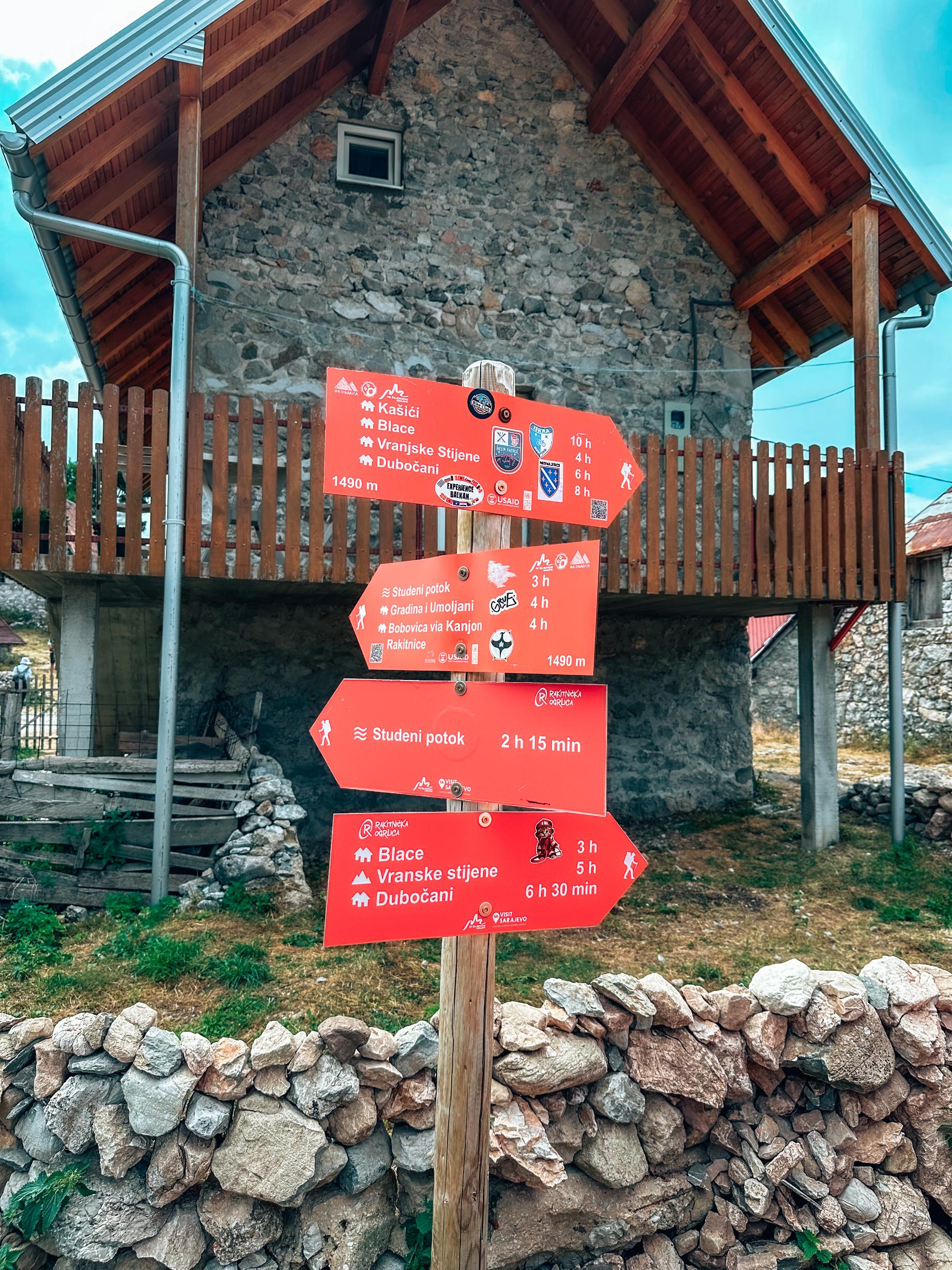
This isn’t one of those “museum villages” where heritage is polished for display. Lukomir is alive. Kids kick footballs in the dust. Sheep and chickens wander through alleys. The call to prayer lingers on the breeze from the Džamija Lukomir. A woman invites you in for coffee boiled three times over an open fire, as her knitting needles click away.
It’s a kind of authentic tourism you rarely find anymore – where you’re not consuming an experience, you’re being absorbed by it.
Hike in. Stay the night. Buy the socks, listen to the stories and dance with the restaurant owner who makes the best pies in town.
Of course, the question hangs in the air: will more tourists ruin it? That’s the paradox. Tourism played an important part in the survival of Lukomir – but if it became just another Instagram hotspot, the very thing that makes it special would vanish. For now, it feels in balance. There are no hotels, no souvenir stalls stacked with plastic tat. Just family homes doubling as guesthouses, women selling home-knitted socks, food that comes straight from the garden or the flock.
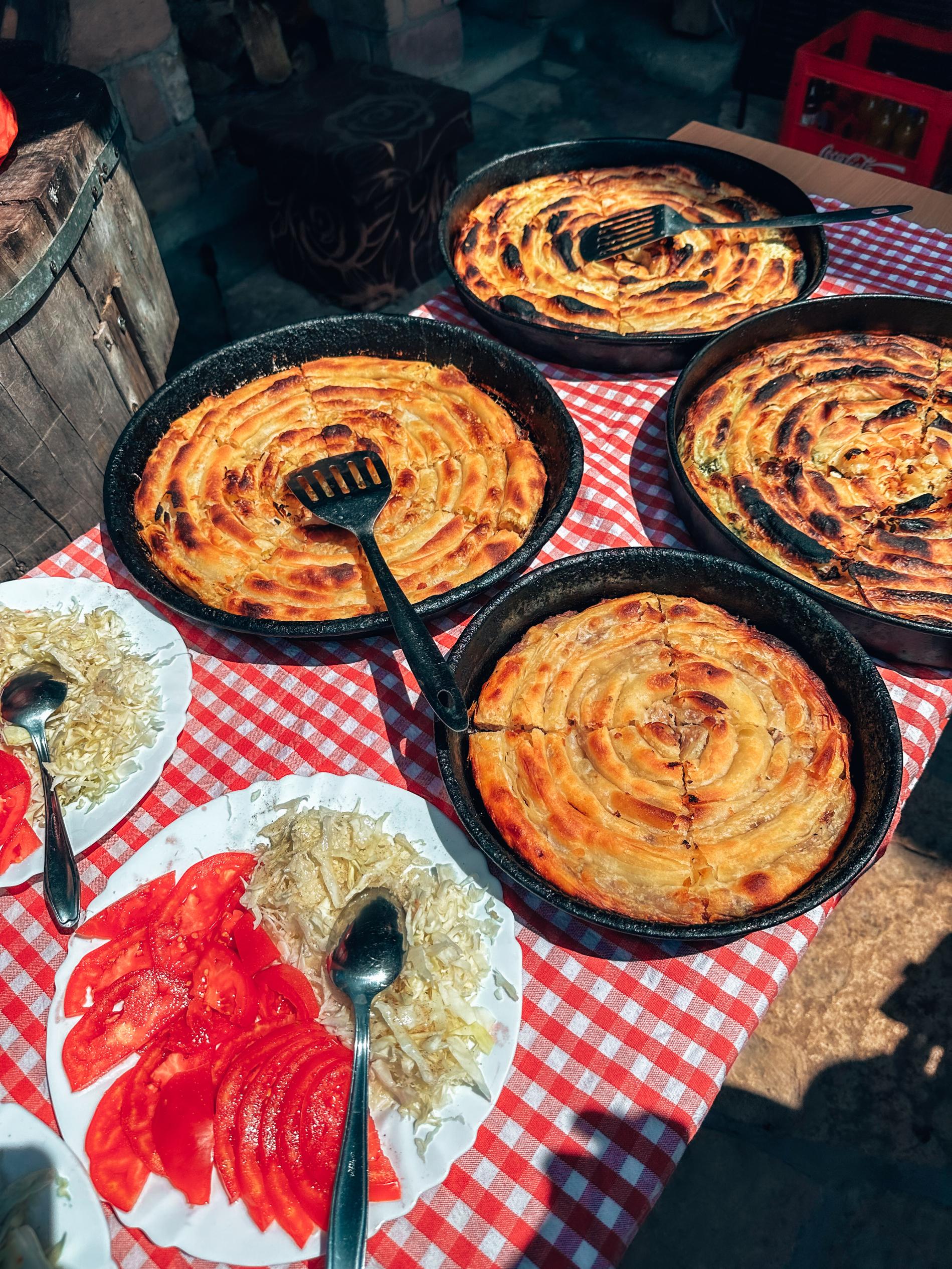
If you go, go slowly. Hike in. Stay the night. Buy the socks, listen to the stories and dance with the restaurant owner who makes the best pies in town.
It’s not about ticking Lukomir off a list – it’s about helping ensure it’s still here when the next traveller, the next generation, comes searching for it.
The Town at the End of the World
Lukomir isn’t an easy destination to reach, but that’s what makes it worth it. You can visit the postcard-perfect Ottoman bridges and lively city squares. You could drink coffee in the quaint Old Town of Sarajevo, but you’d be missing the raw, unfiltered side of Bosnia and Herzegovina.

It’s about more than just ticking another destination off your checklist. Go to Lukomir to feel the wind whip across Bjelašnica and roar into the abyss to hear the canyon swallow the sound. To sit with a culture, a community that has outlasted empires, wars and has battled the harsh winters – yet still serves you burek with a smile.
Is Lukomir worth visiting? Absolutely. But don’t come for the checklist. Come for the connection. Then leave knowing that your presence helped keep this mountain village alive – not as a relic, but as a community stubborn enough to outwit time itself.
Inspired? Hike to Lukomir on the Via Dinarica in Bosnia and Herzegovina!


